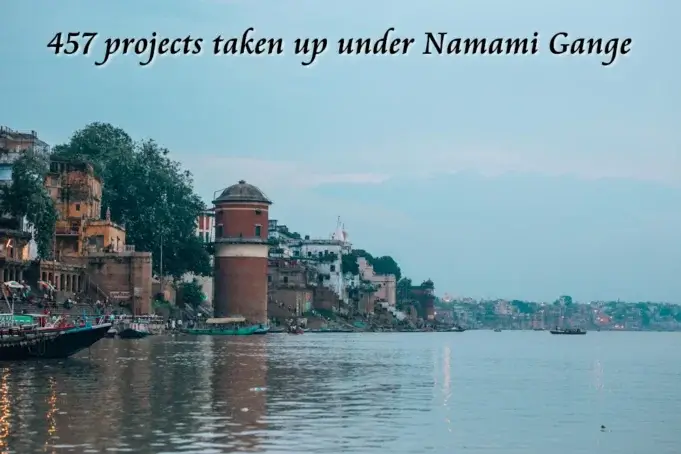In 2014-15, the Indian Government initiated the Namami Gange Programme to purify the Ganga River and its tributaries. As of now, a total of 457 projects, including sewage infrastructure, have been approved, entailing a total cost of Rs 38,438.05 crore. Out of these, 280 projects have been completed and are operational. The 198 sewerage infrastructure projects, costing Rs 31,575.84 crore, taken up under this scheme would create and rehabilitate 6,208.12 million litres per day (MLD) of Sewage Treatment Plant (STP) capacity. Of these, 111 projects have been completed, leading to the creation and rehabilitation of 2,844.00 MLD of sewage treatment capacity.
To combat industrial pollution, the National Mission for Clean Ganga (NMCG) has identified industrial clusters and provided financial support to sectors such as tanneries and textile effluent. NMCG has sanctioned 5 industrial projects for Common Effluent Treatment Plants (CETPs) to mitigate pollution. Of these, the Mathura and Jajmau CETP projects have been completed, while others are in progress.
To conserve wetlands, NMCG has prioritized floodplain and urban wetlands within the basin. Four wetland conservation projects have been sanctioned in Uttar Pradesh, Bihar, and Jharkhand under the Namami Gange program.
The PRAYAG (Platform for Real-time Analysis of Yamuna and Ganga and their Tributaries) Monitoring Centre is effectively utilized for project planning, river water quality monitoring, and STP performance evaluation through various online dashboards.
As part of the “National River Ranching Programme 2023,” NMCG has released 93 lakhs of Indian Major Carp fingerlings into the Ganga since 2017 to preserve fish biodiversity and support the prey base for river Dolphins.
To protect riverine ecology, NMCG has approved the establishment of four Ganga Biodiversity Parks in Uttar Pradesh, observing increased species sightings of Dolphins, Otters, Hilsa, Turtles, and other riverine species. Additionally, extensive afforestation covering over 30,000 hectares has been undertaken.
NMCG has conducted comprehensive public awareness campaigns to engage the public in cleaning and conserving the Ganga River, with the support of Ganga saviours such as Ganga Praharis, Ganga Vichar Manch, and Ganga Doots.
To ensure cleanliness at the district level, 139 District Ganga Committees (DGC) have been formed under the chairmanship of District Magistrates. The performance of these committees is monitored through the Digital Dashboard for District Ganga Committees Performance Monitoring System (GDPMS).
Furthermore, NMCG, in collaboration with other agencies and selected DGCs, has developed District Ganga Plans for four districts in the Ramganga Basin, promoting decentralized planning and community participation in river basin management.
Cover Photo Courtesy: www.pexels.com











